Ardbeg Distillery – The Making of an Untamed Spirit
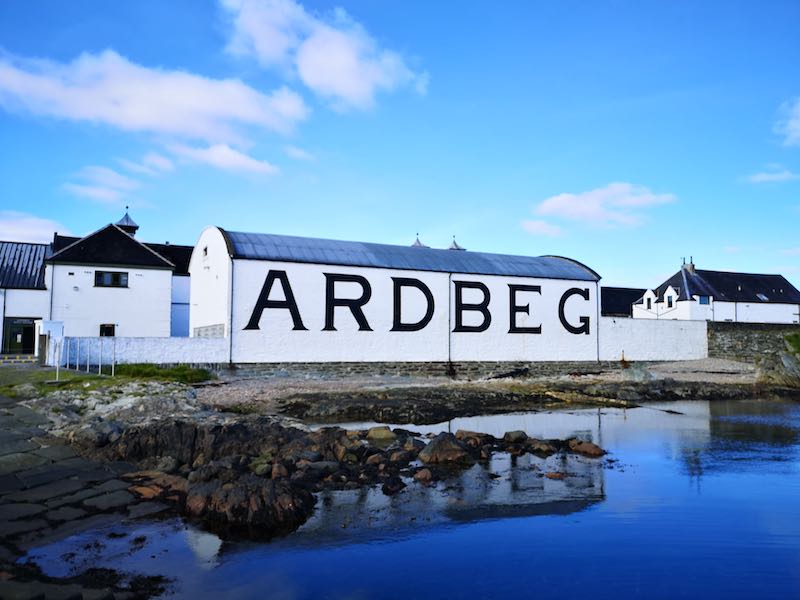
Ardbeg Distillery
After our fantastic Laphroaig tour, we moved on to the next distillery along the coast. Ardbeg distillery is yet another famous Islay powerhouse that produces excellent whisky! It used to be known as the “smokiest whisky”, but in recent years, the title belongs to Bruichladdich’s Octomore series. Nonetheless, many whisky lovers still refer to Ardbeg as the “smokiest whisky” because they think that Octomore is more peaty than smoky!
What’s famous at Ardbeg?
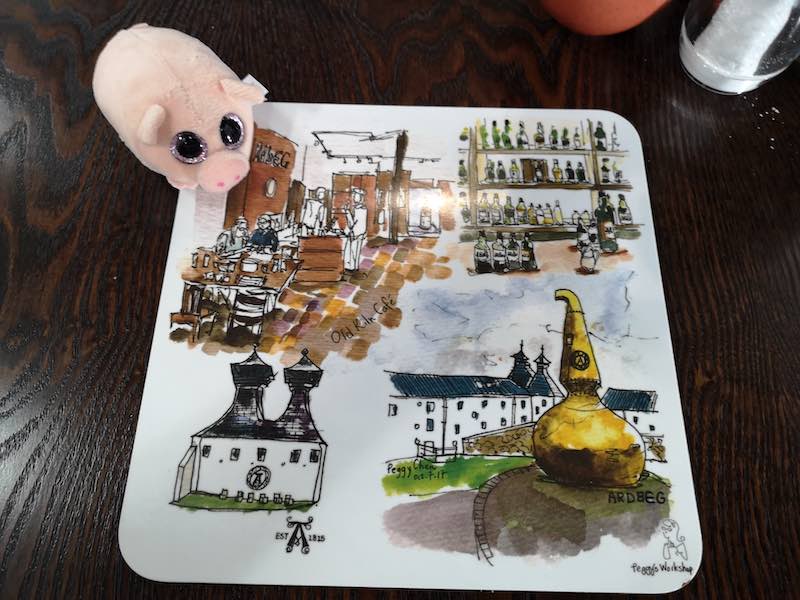
Ardbeg distillery is not only famous for its whisky. It is also renowned for its food. The haggis, nips and tatties came highly recommended, as well as some of their other food choices. We decided to have lunch there before we went for the tour. It was the perfect decision. The food was amazing! You would, however, had to go there to find out just how good they were!
A short walk around the distillery
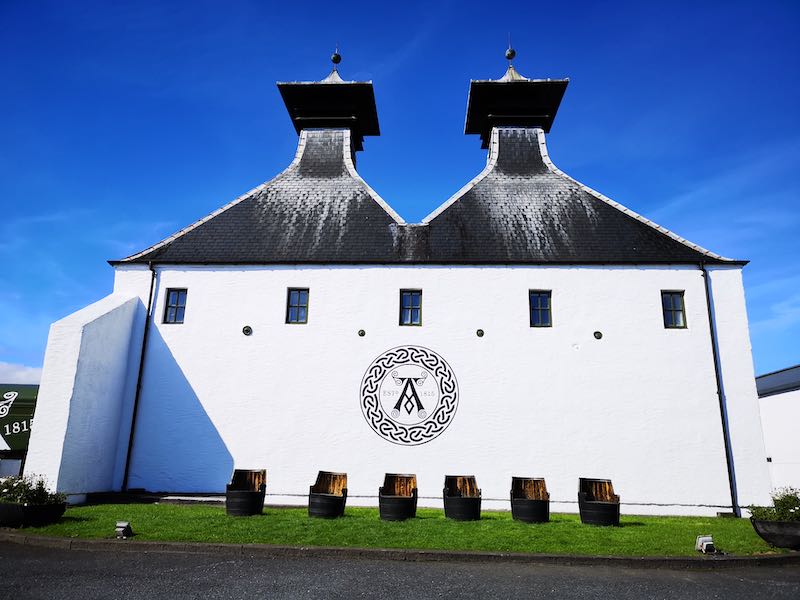
Ardbeg building behind the visitor centre
After lunch, we took a quick walk-around at the distillery while waiting for our tour to start. We found this quaint building at the back of the visitor centre, with chairs fashioned out of casks. It took a lot of patience to take a photo without someone sitting on those chairs! We wished that we could take those chairs home with us though; they would look grand at my home bar!
Starting the Ardbeg Tour
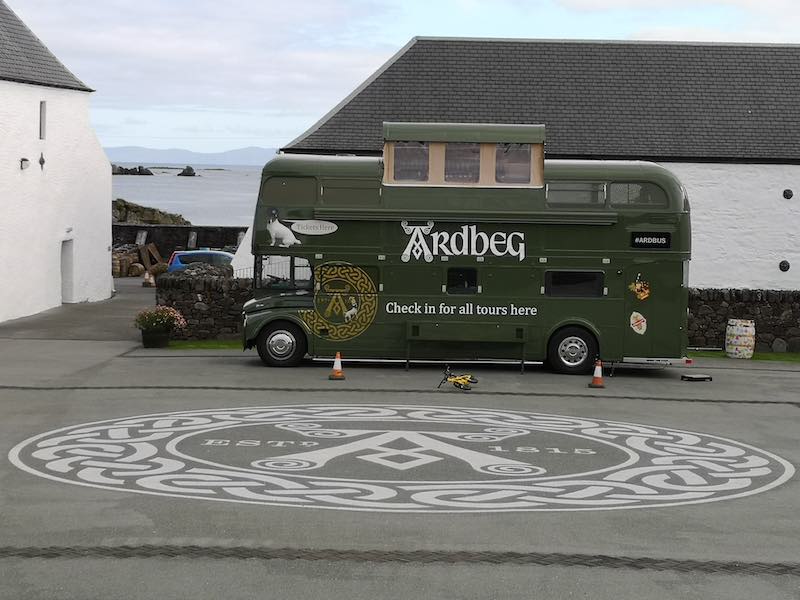
Ardbeg Bus
All tours at Ardbeg began in the area outside of the visitor centre, where a big Ardbeg bus stood. A child had cheekily placed his bike in the middle while he ran around. Our friendly guide came promptly at the start of the journey. After giving us a safety briefing, she took us back into the visitor centre where we gathered again under the Ardbeg signage for a headcount.
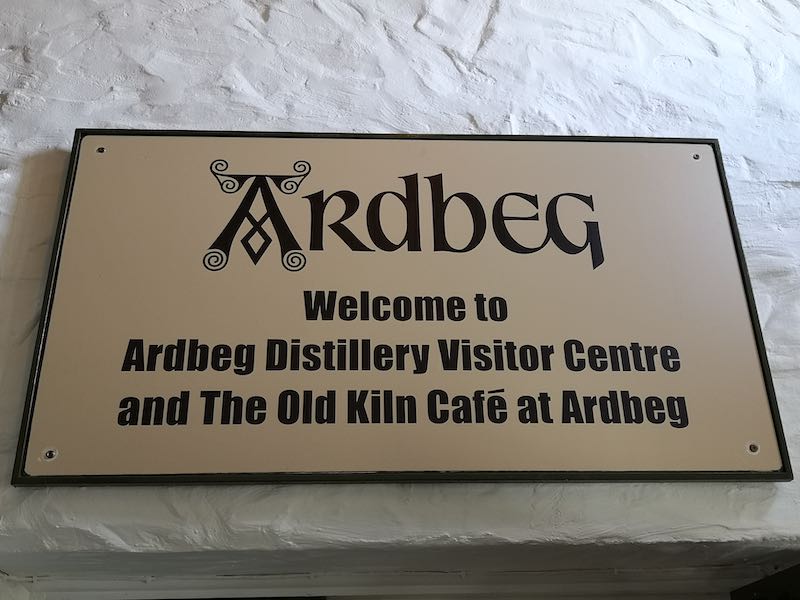
Once everyone was accounted for, we were off to the second floor, and into the actual distillery!
Step 1: Grinding of Barley

Barley
Ardbeg does not have a malting floor of their own. They buy customised malted barley (Concerto, smoked to 55ppm) from Port Ellen Maltings. Each batch of malted barley (30 tons) arrives at the distillery each week, and the malting team at the distillery grinds them into grist, husks and flour.
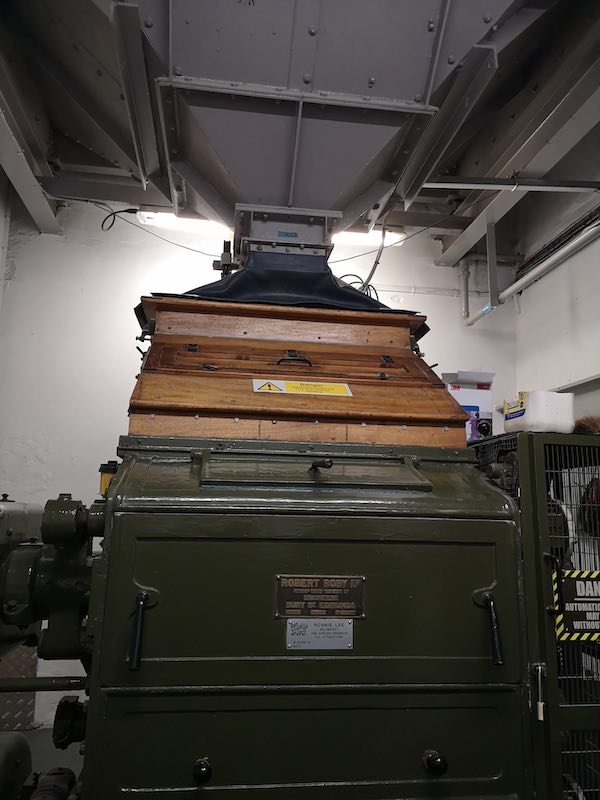
Bobby Mill
Say hello to the Bobby mill of Ardbeg. It is the machine that grinds the barley. There are only 4 Bobby Mills in Scotland. The four distilleries that have them are Ardbeg, Ardnahoe, Bruichladdich and Glen Scotia. The machine mills five tons of barley in each run. The team runs the mill for three to five seconds before catching a sample to weight and check if they got it right. The mill runs for 16 to 17 times in a week. The barley is grounded to 70% grist, 20% husk and 10% flour. The Bobby mill is a manual machine. The team depends on experience to know how long to run the mill as there is no control panel.
Fun Fact: Ardbeg bought their Bobby mill in 1921 at GBP300 as a secondhand! Imagine how much the Bobby mill will cost today!
Step 2: Mash House
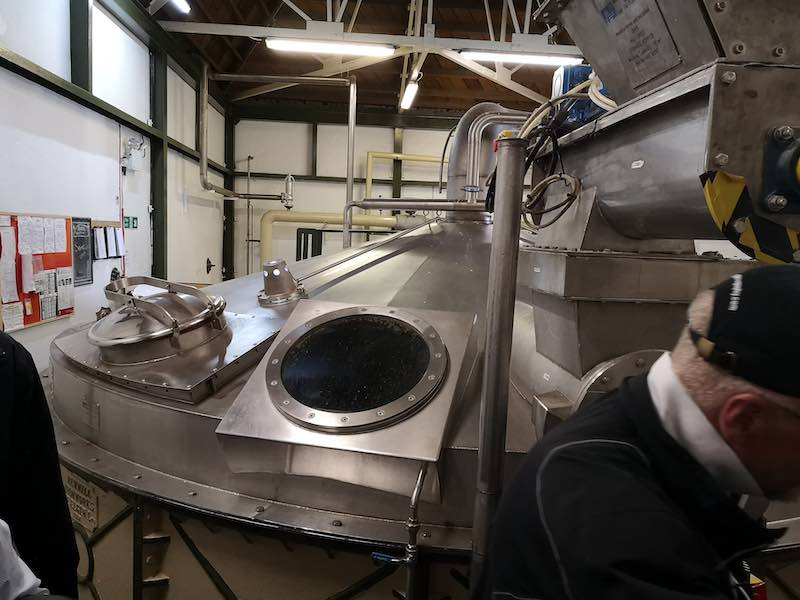
Mash Tun
After visiting the relic that is the Bobby mill, we proceeded to the Mash House, where we got into more action. The mash house is the location where the team produces baby whisky. To extract the sugar from the barley, the mashing team puts the barley into the mash tun and adds three steams of hot peated water to it. The first steam of water (17.5 thousand litres) is at 68 degrees C. The water sits in the mash tun for 15 minutes to fully extract the sugar before draining. The second steam of water, also at 68 degrees C, goes in after, and flows out immediately to join the first steam. The last steam of water at 80 degrees C. removes the last bit of sugar available in the barley. It is also drained immediately.
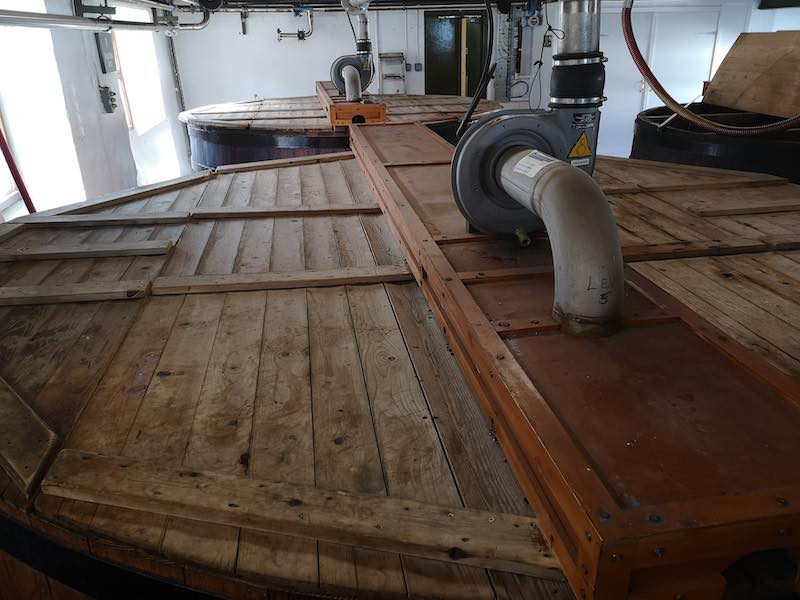
Washback
The liquid at the end of this process is no longer ordinary peated water. It has become wort or sugar water. The team cooled the wort to 18 degrees C before pumping it into the washback. Once ready for fermentation, the wort received 22.5 tons of yeast. Ardbeg sets fermentation at 55 hours in the summer, and 56 to 58 hours in other seasons. The long fermentation allows for flavours to form, but the process is exceptionally smelly!
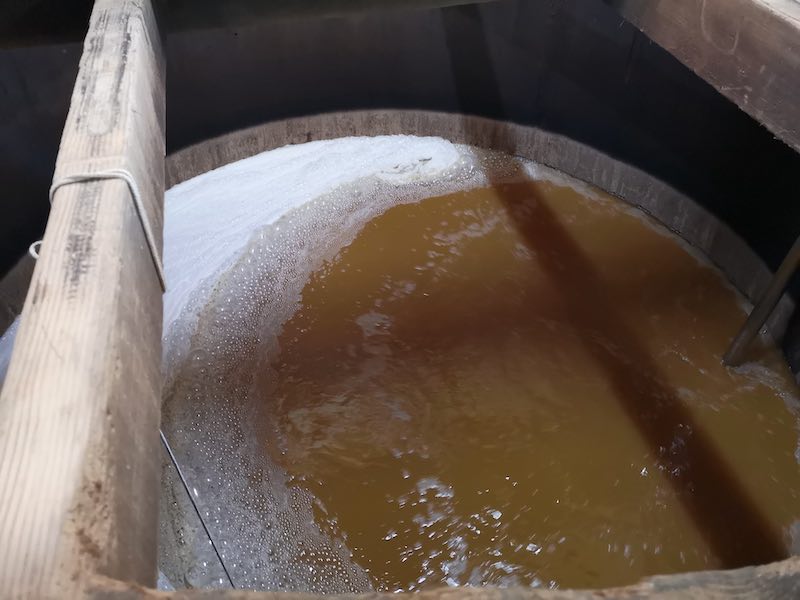
Yeast in Action
The end product of the fermentation process is known as the wash. The wash is technically a beer. It needs to go through the next step to become the clear liquid we know as new make.
Step 3: Distillation
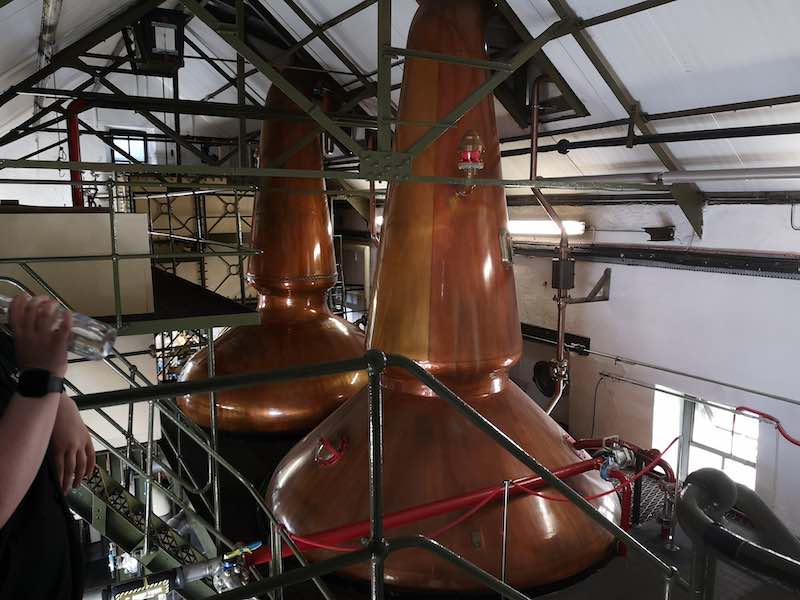
The Ardbeg Stills
The next step is the distillation, of course! 11.5 thousand litres of wash charges into the wash still at each run and undergo the first distillation. The interesting fact about this process is that the still actually can hold up to 18 thousand litres, but Ardbeg only charged 11.5 thousand litres into the still for every distillation. After the first distillation, the low wines (from the wash still) go into the spirits still for the second distillation.
Ardbeg cuts the heart of the spirit at between 73% abv to 69% abv. Anything above 73% abv is the head, and those below 69% abv is the tail. The head and tail will join the next charge of the wash in the wash still.
Step 4: Maturation
All new-make needs to mature three years in oak casks before they can be called whisky. Unfortunately, we were not able to see the warehouse at Ardbeg due to renovation. However, our guide brought us out of the distillery to enjoy some excellent views!
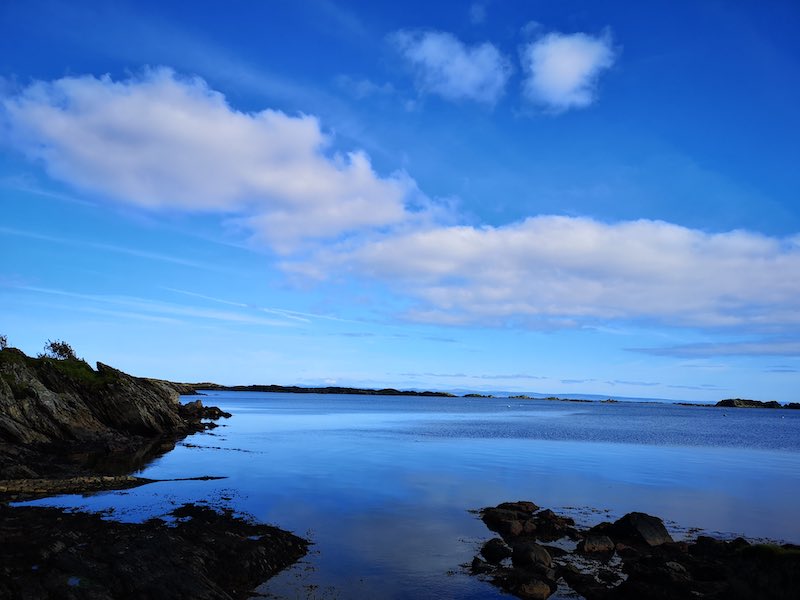
View from Ardbeg distillery
She also showed us the new building that will house the new Ardbeg stills at the distillery when the renovation completes. There will be four new stills at Ardbeg, and the two old stills will be melted. The new stills will double the production of Ardbeg whisky from 1.4 million litres a year to 2.8 million litres. Our guide shared that the distillery hopes the increased production will eventually push prices down for their whisky so that more people can enjoy the goodness of Ardbeg.
Step 5: Tasting
The tour group returned to the visitor centre, where we entered the bar located next to the cafe. Our guide ushered us into a secret room at the back, and when all of us were comfortably seated, she told us that we would be getting a dram from a choice of five bottles.
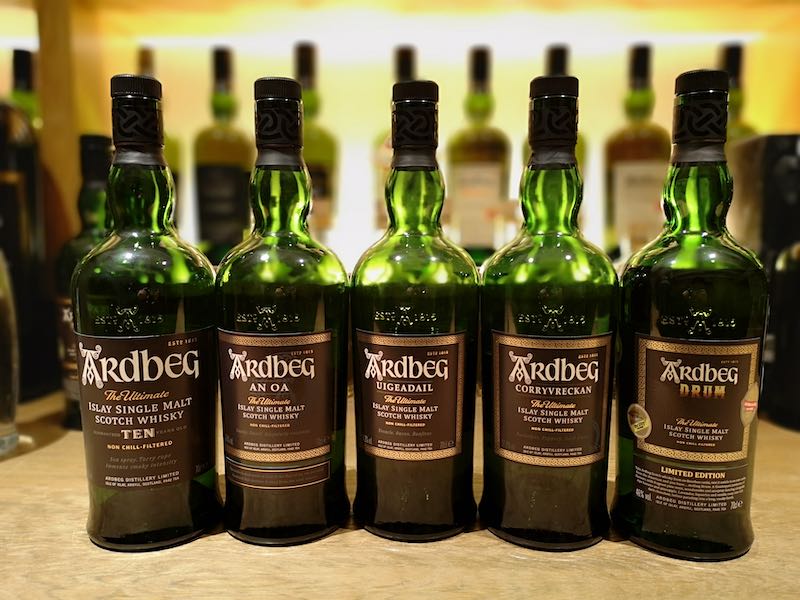
Available choices
If you are disappointed, please don’t think that Ardbeg is stingy. We went for their regular tour, and not the warehouse tour, which means that we only get one dram each. Both of us chose the Ardbeg Drum because we had all the other expressions before. The Ardbeg Drum reminded me of pineapples, which was stunning for us! Our guide stayed with us, and we had a wonderful time chit-chatting. Towards the end of the session, we even laughed at the expense of others when our guide shared her stories of how people mispronounced distillery names!
Before we went off, I managed to take a photo of Shortie, Ardbeg’s mascot!
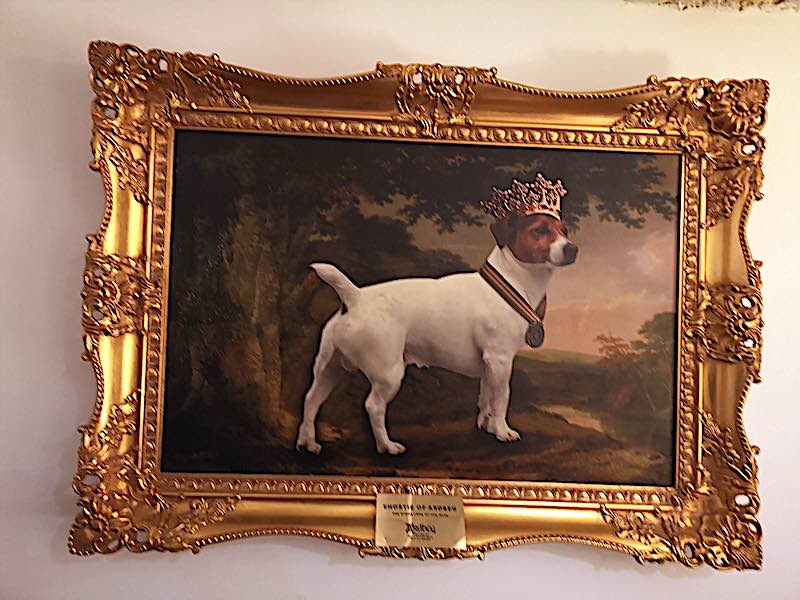
Shortie!
Shortie belonged to one staff member of Ardbeg. He was always naughty and ran around the distillery looking for treats. As a result, the distillery decided to name Shortie the mascot for Ardbeg. Even though he was no longer around, his spirits lived on in every person at Ardbeg distillery!


